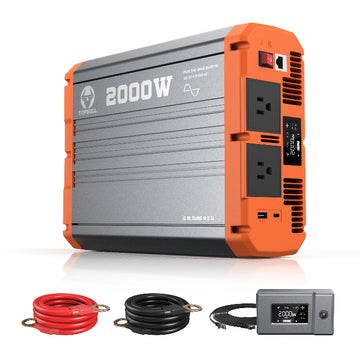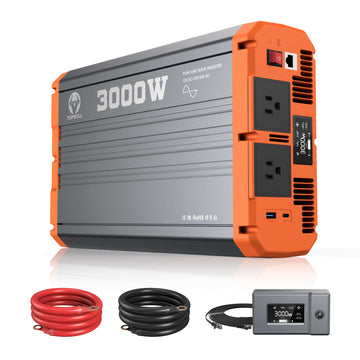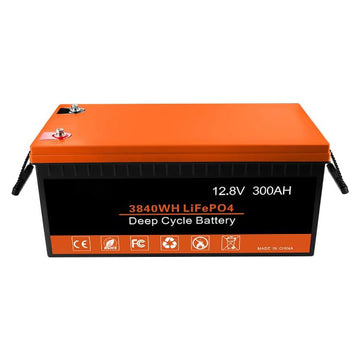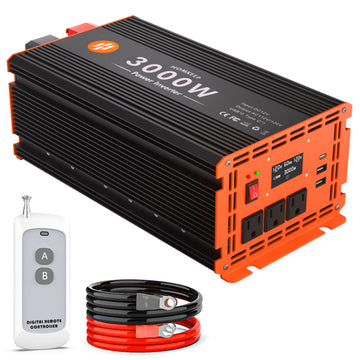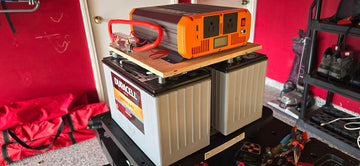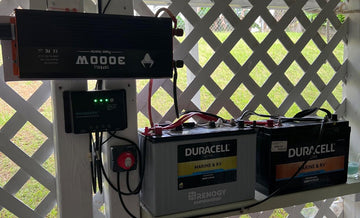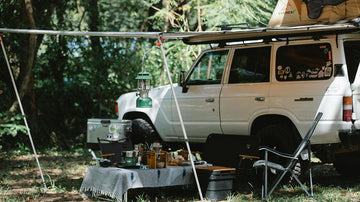Electric kettle is a common and frequently used kitchen appliance in our life, especially it is very convenient to boil water in a short time. In the case of power outage or no utility, many people want to use the inverter for electric kettle power supply, but due to its high power, whether it can be used successfully has become a concern. This article will focus on this issue, a detailed analysis of the feasibility of the use of electric kettles in inverters and related considerations.
Can I Use an Electric Kettle on an Inverter
Yes, you can absolutely use an inverter to run an electric kettle, but only if the power rating of the inverter is high enough and it must be a pure sine wave type. Electric kettles are usually high powered and also have momentary current spikes during startup, so if the inverter is underpowered or has an unstable output waveform (as in the case of modified sine wave inverters, not only will you not be able to start the kettle, but you may even damage the inverter and the appliance.
In addition, the battery capacity behind the inverter must also be sufficient to support the continuous high energy consumption of the kettle, otherwise the heating time will be very limited, or even unable to complete the boiling process. In short, by choosing a pure sine wave inverter with the right power rating and a battery pack with sufficient capacity, you can use the kettle safely and efficiently through the inverter.

Understanding the power of an electric kettle
An electric kettle is a high-power appliance. Most household electric kettles have a power range of 1000W to 3000W, and it usually takes 2 to 5 minutes to boil a pot of water.
- Fast kettles: typically 2000W to 3000W.
- Ordinary kettles: mostly 1000W to 1500W.
At the beginning of the heating process, the kettle requires a higher starting current, which means that the actual power at start-up may even slightly exceed the rated power. This instantaneous peak requires the inverter to have enough peak power to support it, otherwise the inverter will automatically cut off due to overload protection.
Power and type requirements for inverters running kettles
Inverters running kettles need to be:
-
Rated power greater than kettle rating: It is usually recommended that inverters are rated at 20-30% higher than the kettle rating to cope with high instantaneous starting currents.
-
High peak power: The peak instantaneous starting current is usually two to three times the rated current, and the inverter needs to be able to withstand high loads for short periods of time.
- Pure sine wave output: electric kettle and other heaters require high waveform stability, pure sine wave inverter can ensure the safety and efficiency of the equipment, modified sine wave inverter may lead to abnormalities or shorten the life of the equipment.
Battery capacity and runtime
Electric kettles High power means that a lot of electricity is consumed quickly. For example, a 1500 watt kettle ideally consumes about 1500 watt-hours (1.5 kWh) in one hour. If you use a 12 volt, 100Ah battery:
-
Battery capacity = 12V × 100Ah = 1200 watt-hours, which is not enough to run the kettle continuously for one hour.
-
Multiple batteries need to be connected in parallel to increase capacity, or a larger capacity battery pack needs to be used to ensure that the water boiling process can be completed.
- Battery capacity also needs to consider the depth of discharge and efficiency, the actual usable capacity will be less.
How to choose the right inverter
If you plan to use an inverter to run a kettle, it is recommended that you choose an inverter that meets the following criteria:
- Pure sine wave inverter with 2000W or more
- Supports high peak power (2500W or more)
- With overload protection and high temperature auto power off
- Reliable brand with certifications (e.g., CE, UL, etc.)
Recommended model: Topbull 4000W Pure Sine Wave Inverter

This inverter has the following advantages:
- Rated power up to 4000W, can easily drive most electric kettles from 1500W~3000W
- Peak power up to 8000W, no pressure to deal with start-up surges
- Compatible with all 12V battery type inputs, a wide range of suitability
- Equipped with LCD display, real-time monitoring of voltage, current and load status
- Built-in multiple protections such as over-voltage, under-voltage, overload, high temperature, suitable for long-term stable operation. Suitable for long-term stable operation
- Applicable Scenarios: outdoor camping, car use, family backup power, RV life, etc.
The cost performance of this product is excellent in its class, especially suitable for users who need to frequently use high power appliances (such as electric kettle, induction cooker, electric heater, etc.).
Will a 1000W inverter run a kettle?
Generally speaking, a 1000W inverter will not run a standard kettle. This is because most domestic kettles are in the 1500W to 3000W range, well beyond the output capability of a 1000W inverter. Even if the kettle is rated at exactly 1000W, the instantaneous (peak) power at start-up can be over 1200W, which can overload, disconnect and possibly damage the inverter.
When using an electric kettle, please equip at least 2000W pure sine wave inverter to ensure safe and stable operation.
If you really only have a 1000W inverter, consider using a small car travel kettle or 12V heating cup with a power of 300W~800W as an alternative. Although it takes longer to boil water, it ensures that the device is not overloaded.
Summary
In general, electric kettles can be run with an inverter, but it is important to make sure that the inverter has sufficient power, is of the right type (pure sine wave), and that the battery capacity matches the demand. This is the only way to use the kettle safely and efficiently, otherwise the inverter may trip frequently or even damage the device. Properly purchasing the inverter and batteries, and considering the overall system's power demand and power supply time, is the key to ensuring the experience of using the device.

